Next week, we were to have flown to Stockholm to board a ship that would take us through the Baltic Sea. I had booked an extra few days in Sweden at the beginning in order to visit the Linnaeus Garden in Uppsala, long a destination on my botanical bucket list. The cruise included Helsinki, St. Petersburg, Talinn (Estonia), Gdansk (Poland), Berlin, Copenhagen and Alborg (Denmark) and three stops in Norway. I added a short flight from Bergen to Edinburgh en route home to visit the Royal Botanical Garden there, another botanical bucket list must-see. Like everyone’s travel plans in pandemic times, our trip was cancelled.
I know a lot of people who disdain cruises, but the few we have taken have been a wonderful way to nimbly visit a series of far-off places that we would not have seen otherwise. One cruise, on a small French ship, was to the Greek islands and the Turkish coast. Another was what I call a ‘tasting tour’ of Southeast Asia from Bali to Bangkok on a relatively small ship. But my favourite and the most unusual was our 2013 cruise through the Eastern Arctic with Adventure Canada and ROM Travel (Royal Ontario Museum), and I thought it would be fun to recall it here on my blog. It began with a charter flight on First Air from Ottawa…..
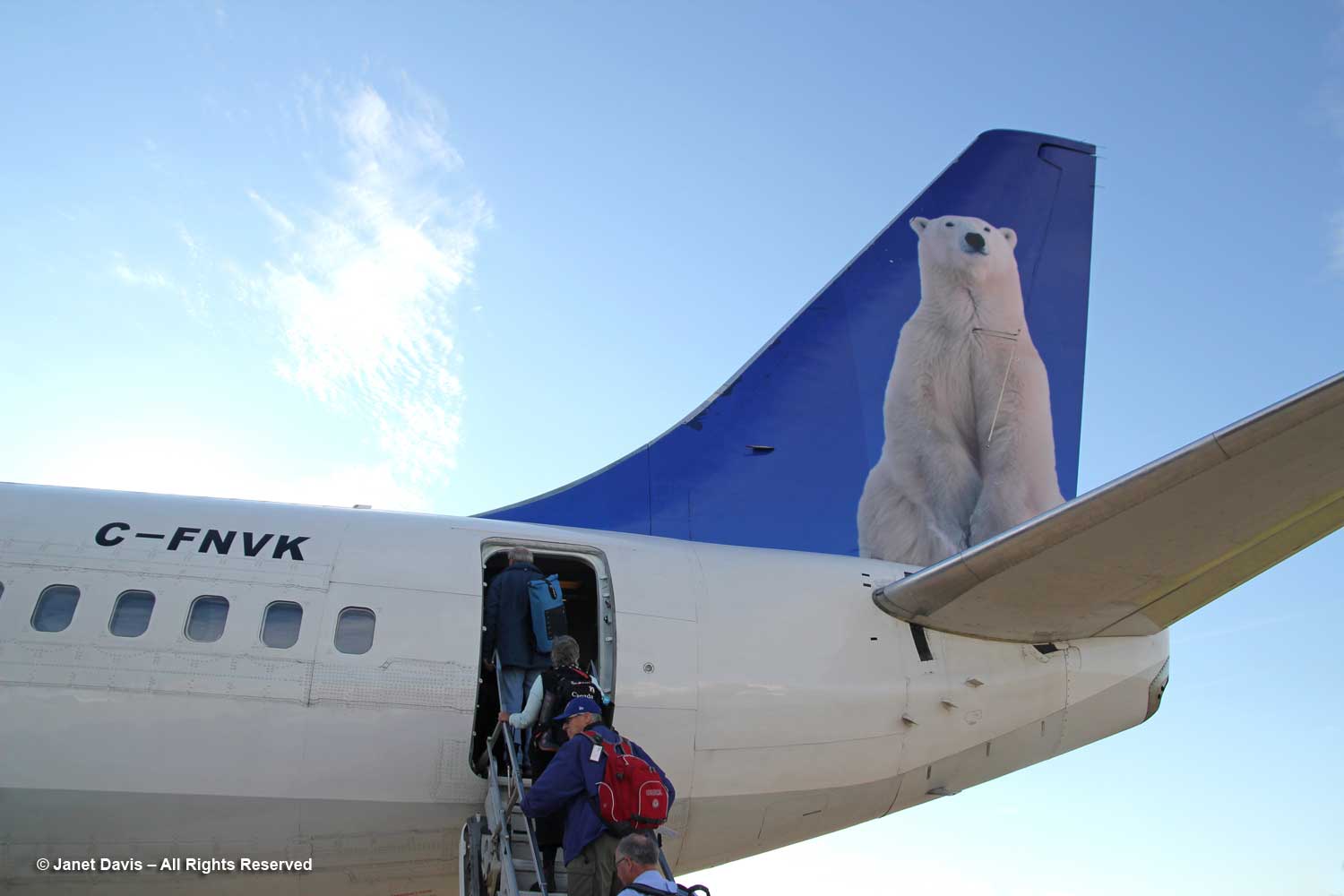
…… over the tundra and Hudson Bay….

….. to land at the cheery, yellow terminal in Iqaluit, the capital of Nunavut, one of Canada’s three northern territories, the others being Yukon and Northwest Territories. Originally called Frobisher Bay, the capital’s name was changed in 1987 to its original Inuktitut word Iqaluit, meaning “place of many fish”.

Shortly after we left the airport, I saw my first patch of dwarf fireweed (Chamerion latifolium), below. I was excited!
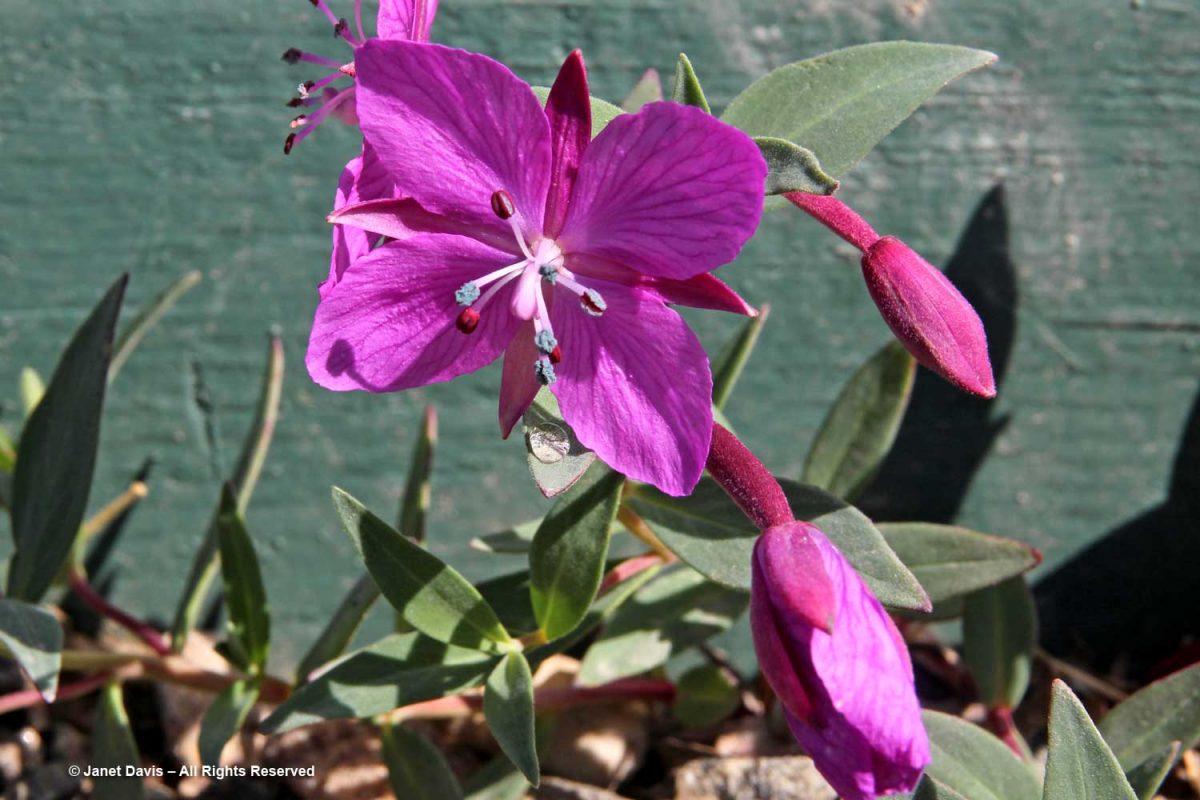
After a brief stop at the Legislative Assembly of Nunavut…..

….. built in 1999 when the region was officially declared a Territory of Canada with a consensus government (no political party)….

…. we departed for Sylvia Grinnell Territorial Park. The park is named for the daughter of the New York man who helped to finance American explorer Charles Francis Hall’s expedition to the region c. 1860. There were informal lectures here, but I was most interested in seeing the flora.
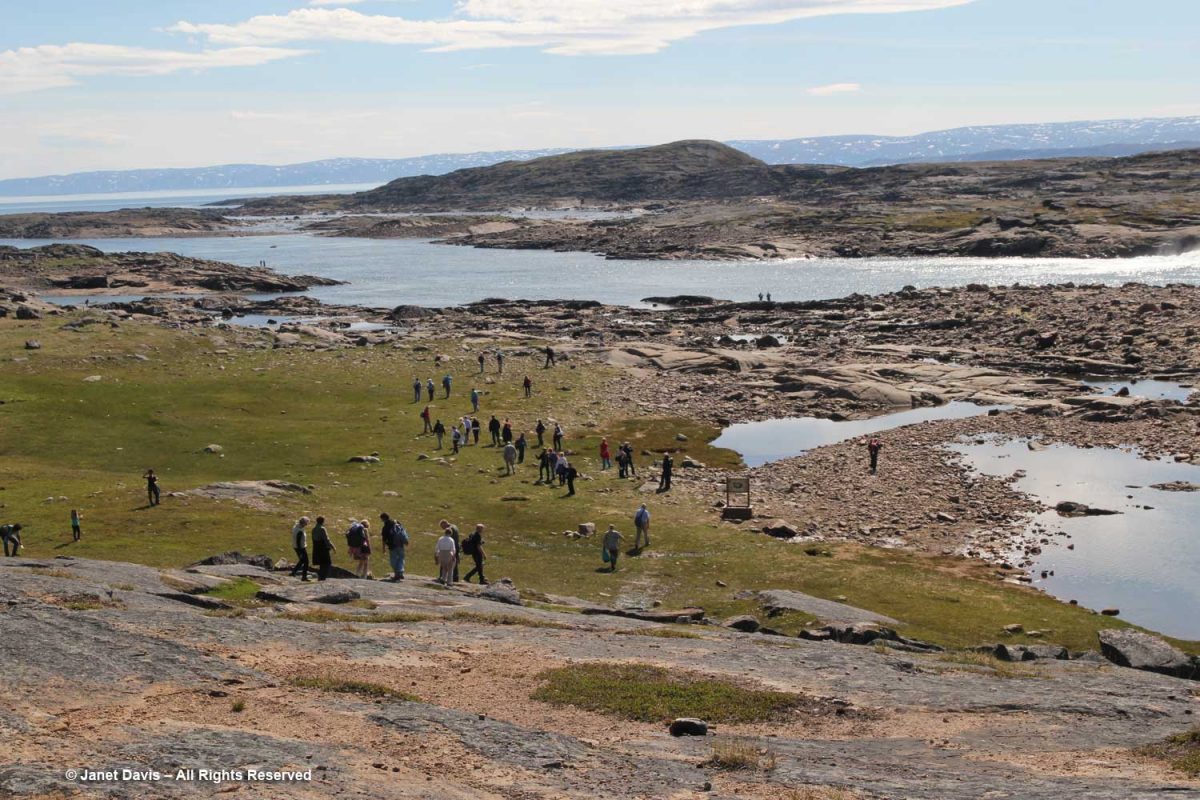
Nunavut has a very short summer window for plants to emerge, flower, fruit and set seed, so our visit on July 27th meant it was the perfect time to see a large selection of natives in bloom. Though it didn’t look promising for those used to seeing large perennials, shrubs and trees (of which there are none here), the ground was a tapestry of tiny treasures.
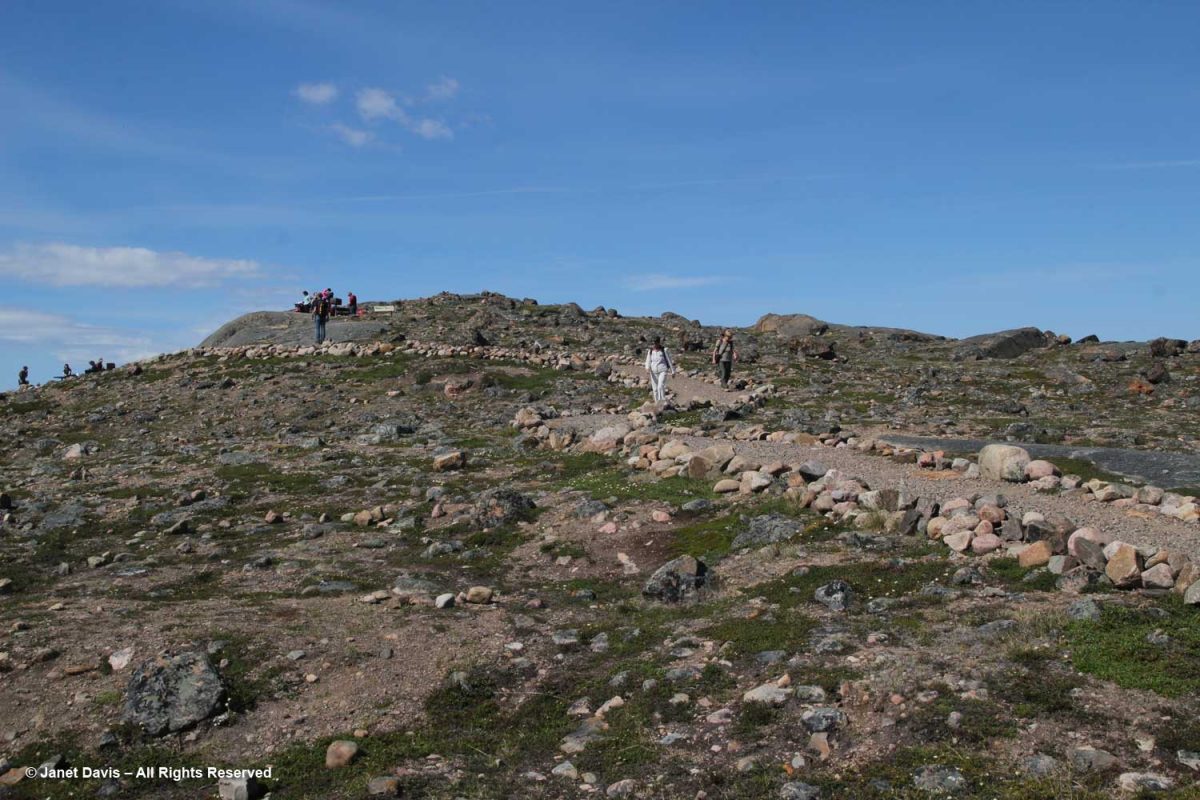
Best of all, Adventure Canada employed a naturalist named Carolyn Mallory…..
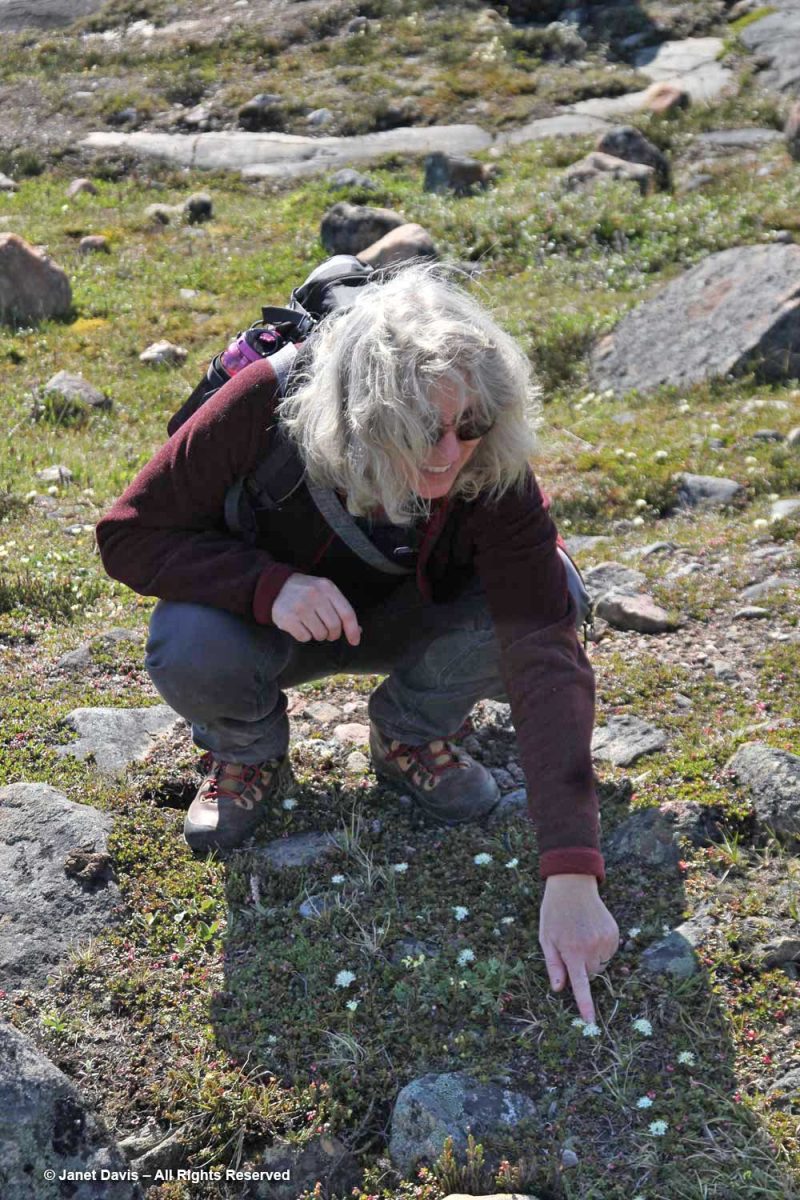
…. who had co-authored Common Plants of Nunavut (which I bought on this trip). Carolyn would get used to me asking her about plants throughout Nunavut and Greenland. I have used information in her excellent book to describe the plants I saw at Sylvia Grinnell Park.

That white flower Carolyn is pointing out above is northern Labrador tea, a prostrate member of the rhododendron genus, R. tomentosum subsp. decumbens.
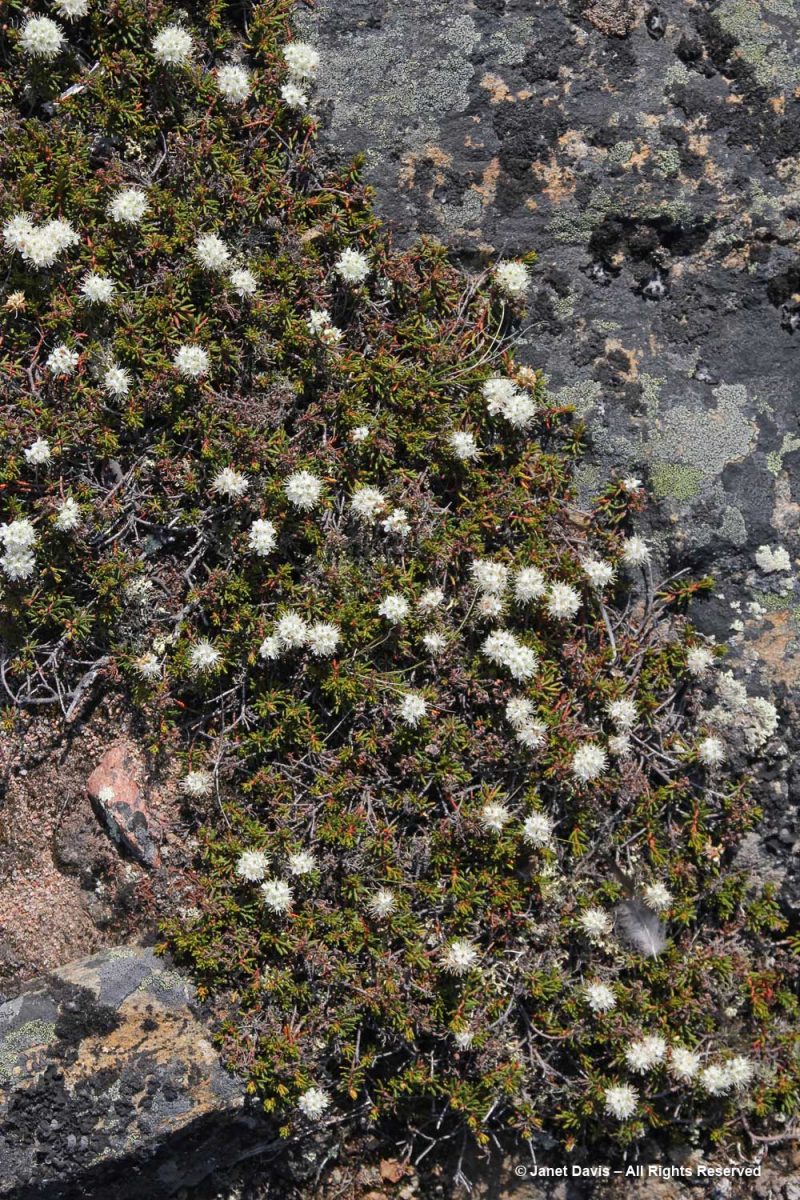
The park was full of plants I had never seen ‘down south’. This is the dwarf shrub white heather (Cassiope tetragona). Its Inuit name isutit means “fuel for the fire”.
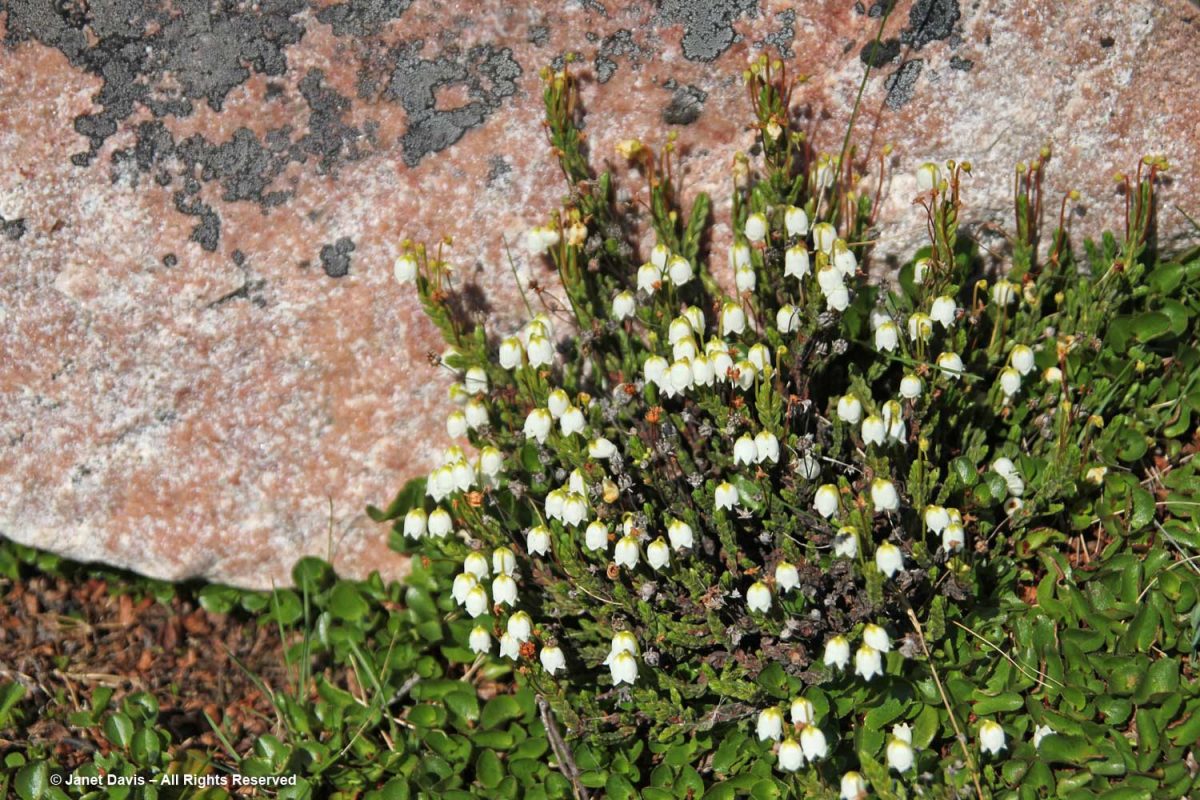
This is Arctic harebell (Campanula uniflora).

Yellow mountain saxifrage (Saxifraga aizoides) is one of many saxifrages in the Arctic.
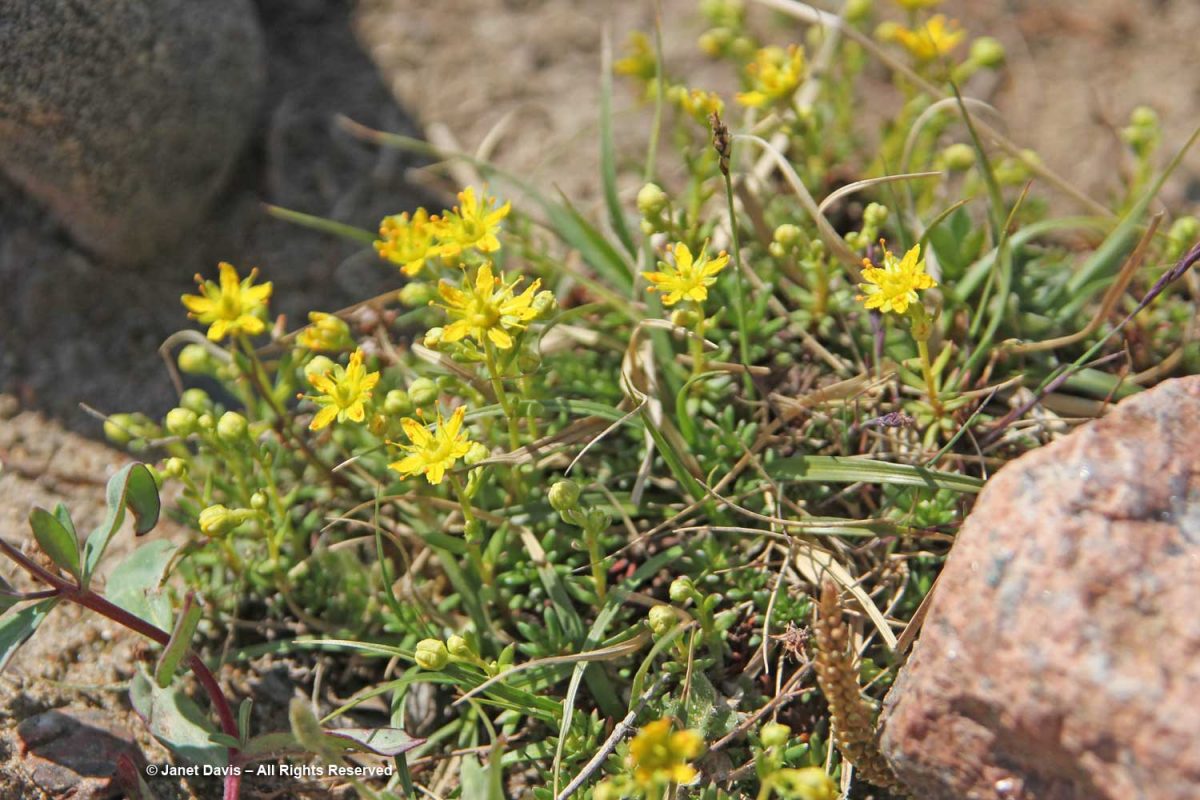
Lapland pincushion (Diapensia lapponica) is a tiny shrub, barely inches above the ground. Its Inuit name is piriqtut nunaralikuluit.
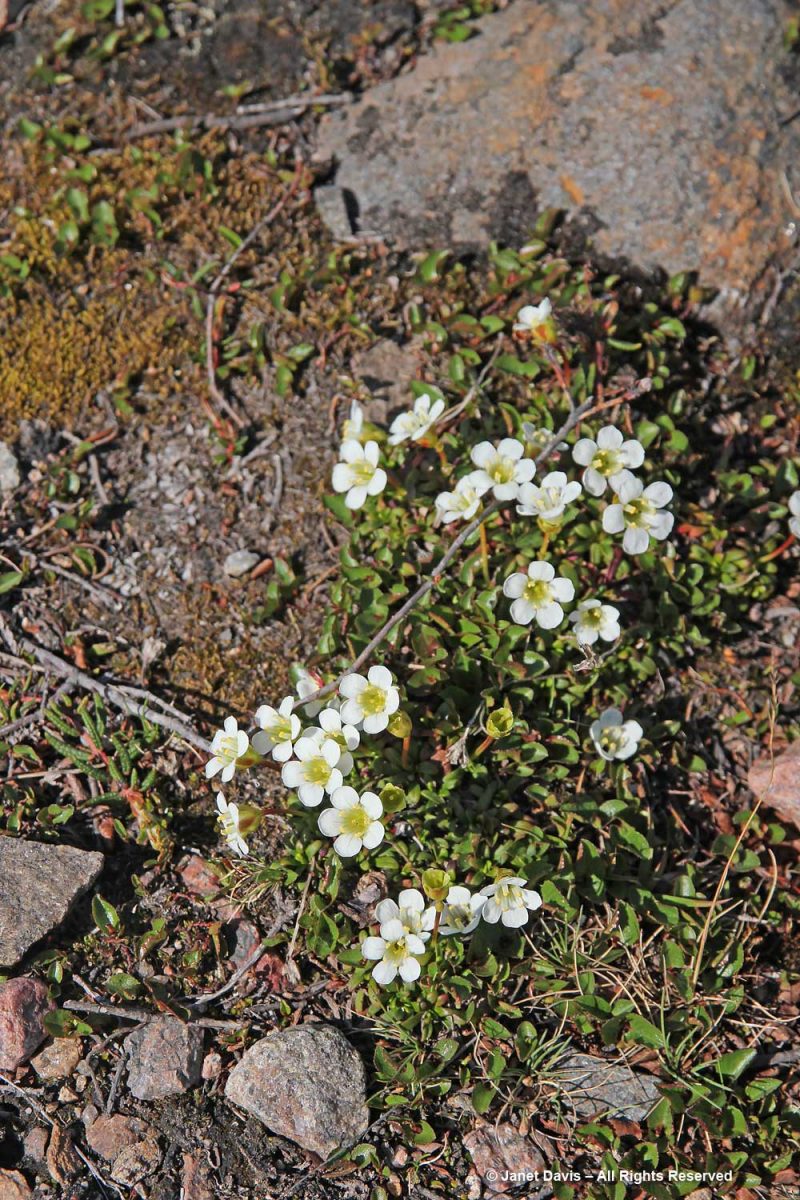
This was a pretty combination: yellow alpine arnica (Arnica angustifolia) with purple mountain heather (Phyllodoce caerulea).
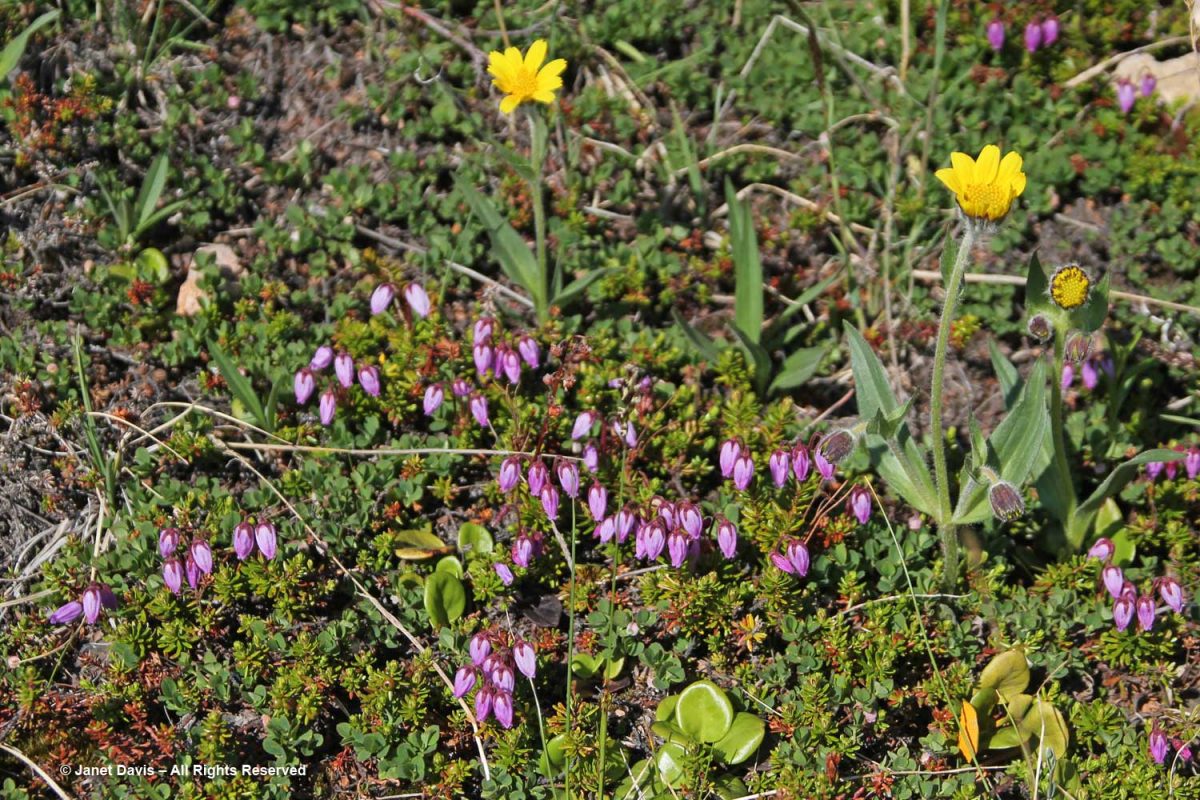
Mountain avens (Dryas integrifolia) is another dwarf shrub that rarely exceeds 15 cm (6 inches). In winter its leaves die off but gradually accumulate a thatch that helps conserve moisture in summer.
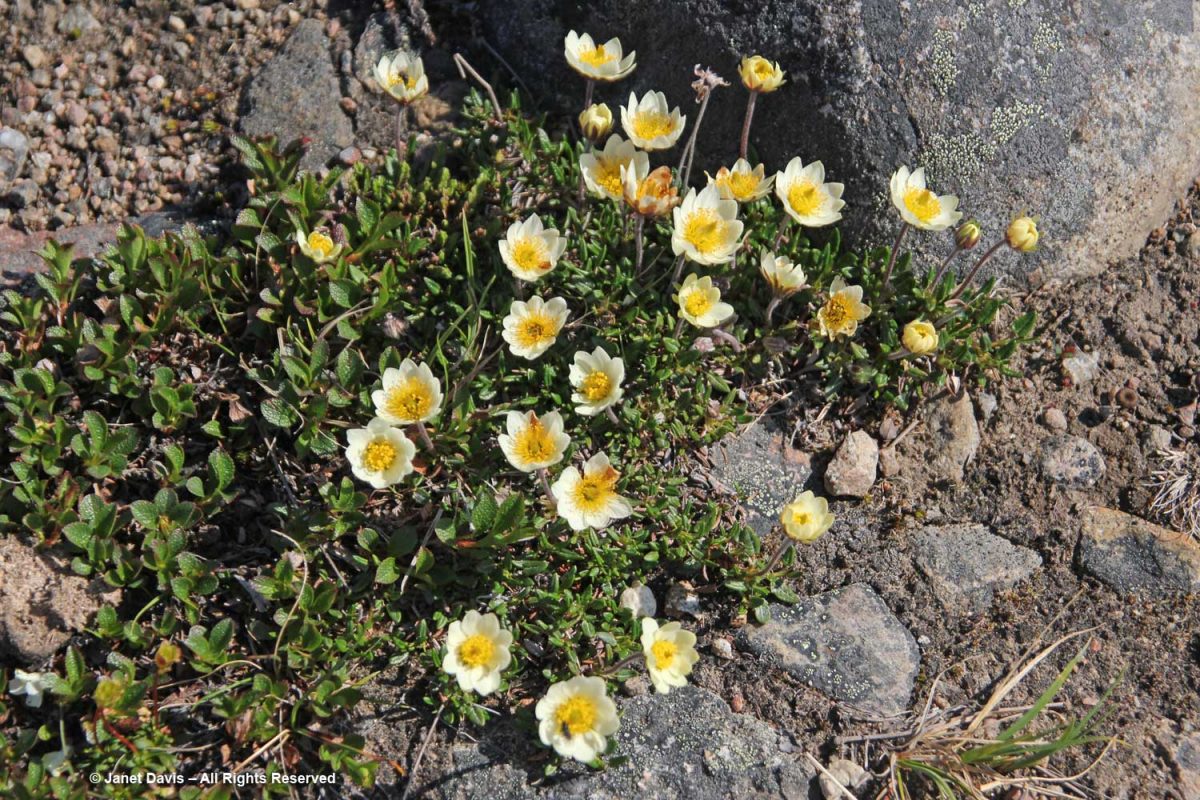
Yellow oxytrope (Oxytropis maydelliana) has a carrot-like taproot that was traditionally fried with whale blubber or seal fat and eaten as a vegetable (airaq) in spring.

Large-flowered wintergreen (Pyrola grandiflora) is a beautiful little perennial with fragrant flowers. Its leaves turn bright red in winter.

We would see tufted saxifrage (Saxifraga tricuspidata) in many locations on our expedition.
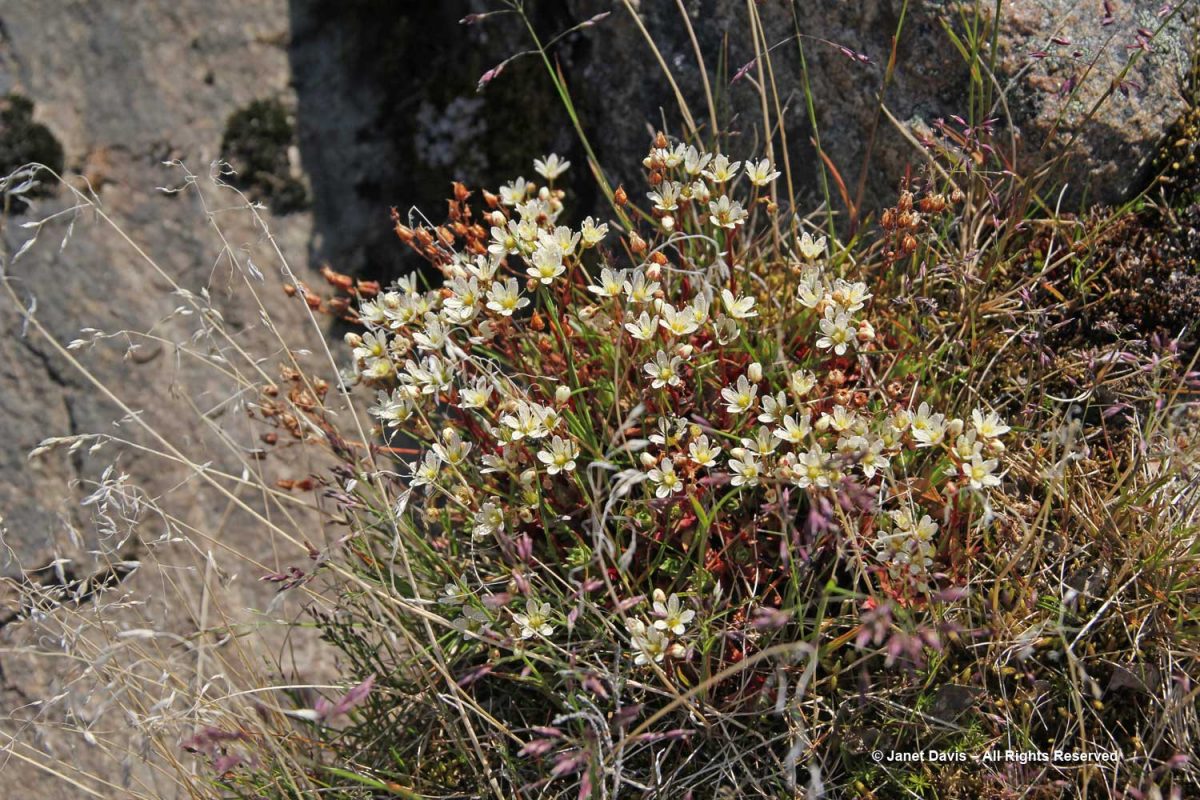
I loved the tiny vignettes that these small plants created with their neighbours. This is moss campion (Silene acaulis) wreathed with net-vein willow (Salix reticulata), one of Nunavut’s thirteen native willow species.
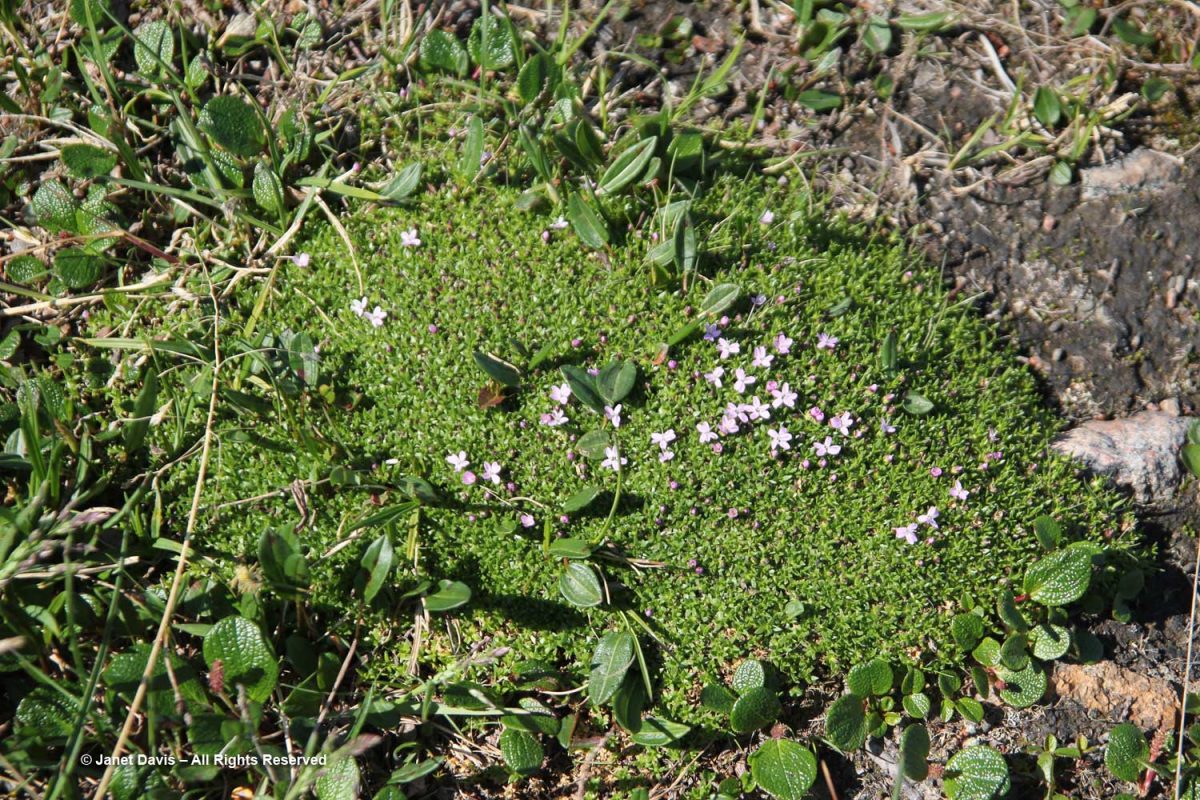
Arctic bladder campion (Silene involucrata) has fused sepals that create a striped bladder that you can see at left.

Arctic poppies (Papaver sp.) look very much alike but can belong to a number of different species, mostly distinguished by variations in leaf lobes and hairs on the leaf reverse or capsules. On the Nunavut Coat of Arms, poppies represent the summer season.

This is flame lousewort (Pedicularis flammea) and though the sunlight was a little too harsh for photography at this point in the Iqaluit afternoon, you can see why the leaves cause the plant to sometimes be mistaken for a fern before flowers appear.
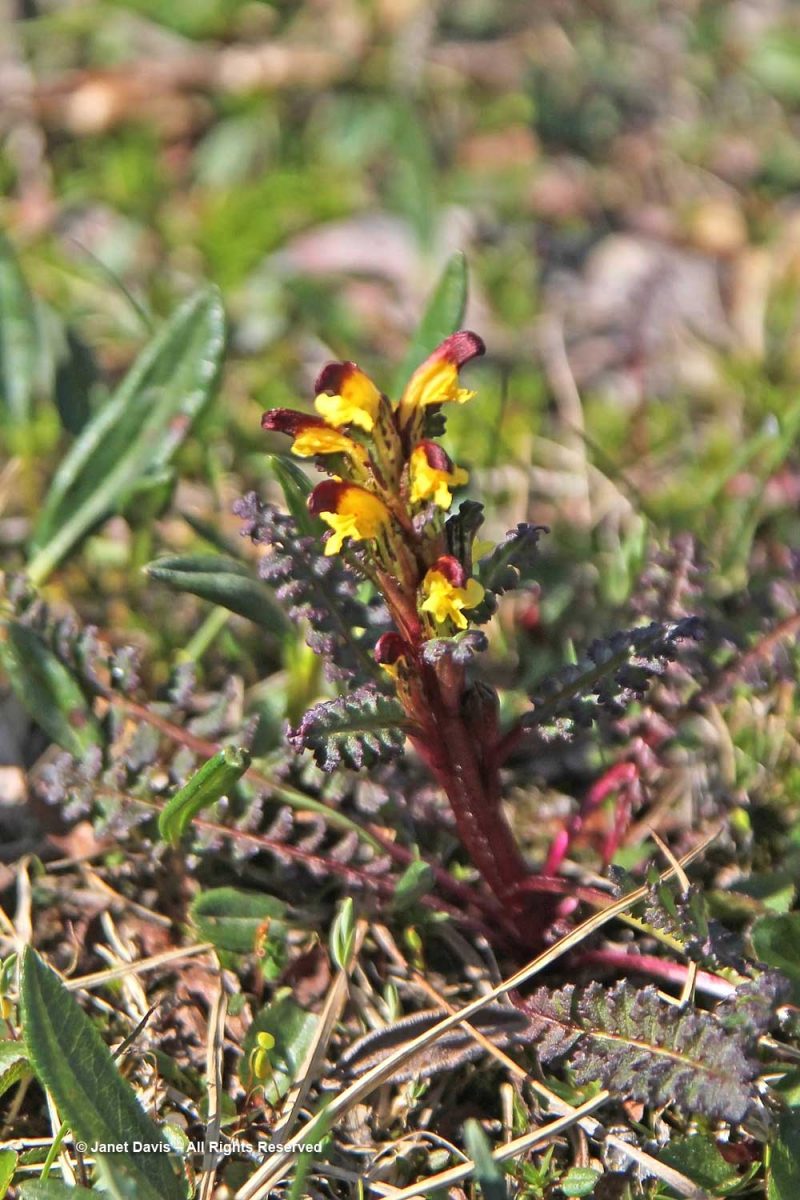
Look at the beautiful blossoms of mountain cranberry (Vaccinium vitis-idaea subsp. minor). Soon there will be shiny, red berries that are evidently sweeter once they’ve gone through a first frost. Inuit people call them kimminait. Inupiaq people from Alaska often mixed them with meats or fish, storing them underground over winter in birchbark baskets.
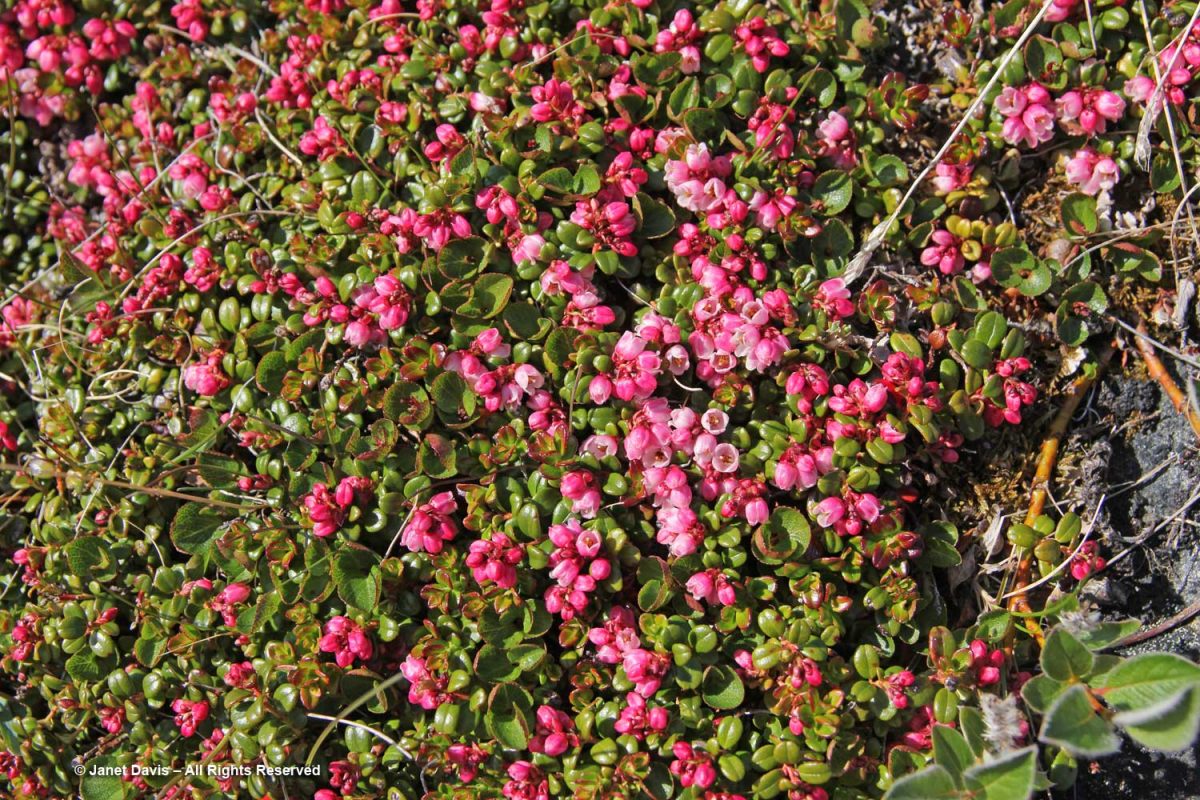
I would have a very difficult time separating out the prostrate willows, but Carolyn listed Salix arctophila on her plant list from our day at Sylvia Grinnell, so I’m assuming that’s the identity of the plant below.

However, with Carolyn’s finger for scale, there was no mistaking the tiny leaves of Salix herbacaea, which is one of the world’s smallest shrubs.
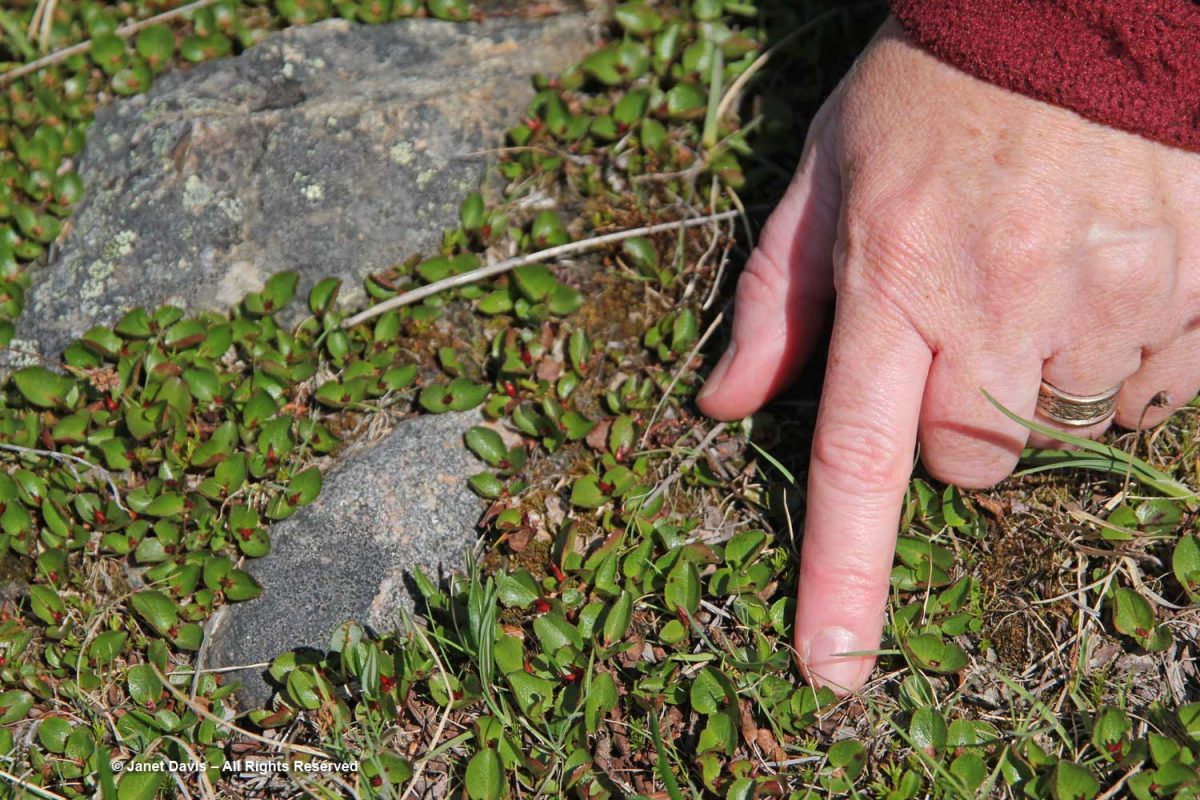
Soon our visit to the park ended and we were bused to the shore to climb into one of several zodiacs to ferry us out to…..

….. our home for the next 10 days, a retrofitted 1975 Yugoslavian-built polar cruise ship called MV Sea Adventurer (now renamed the Ocean Adventurer). Though not technically an icebreaker, it has an ice-hardened hull and is listed as an A-1 Ice Class ship capable of negotiating smaller pieces of sea ice. It was time to begin our adventure in the waters of Nunavut and Greenland…….
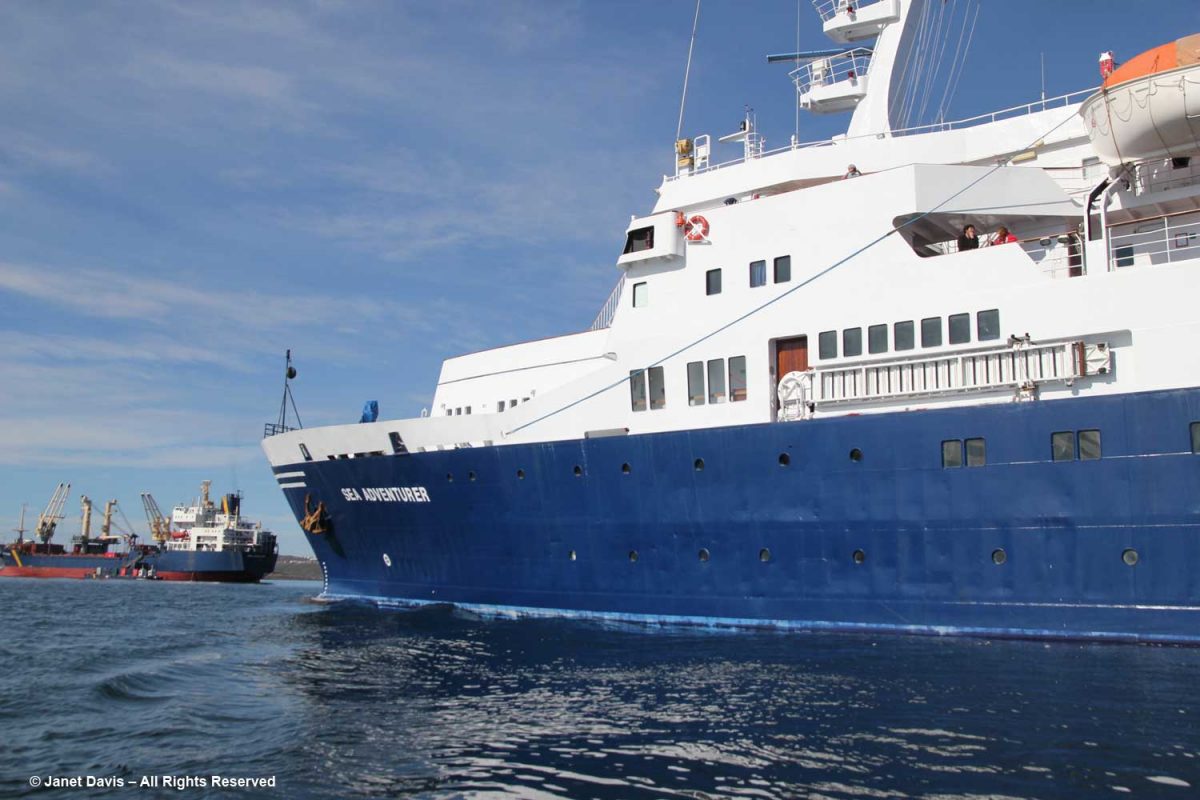
….. and watch our first sunset over the Arctic Ocean. Stay tuned for more.

